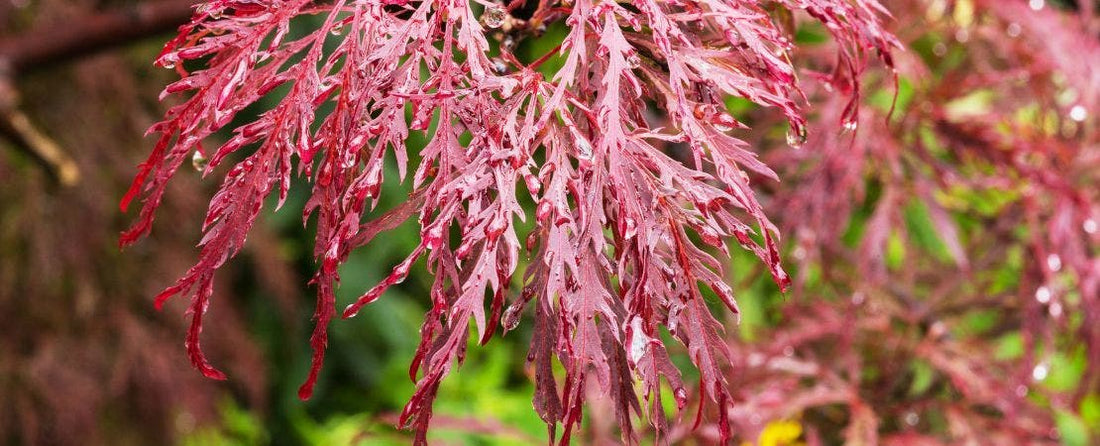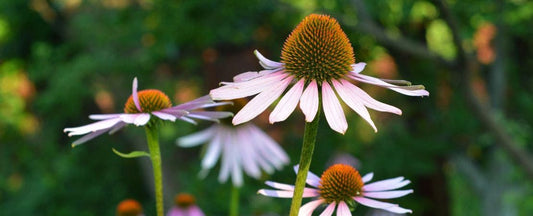Too Hot for Japanese Maples? Watering Tips for Acers

Maples are thirsty trees with shallow roots. Be sure you monitor them in the heat of summer.
Each summer seems to reach record high temperatures. Many of your garden plants may have suffered, if they are still alive. To struggle so hard to achieve a perfect garden and lose some of your most beautiful plants is very difficult. Among the vulnerable and beloved plants are the Japanese Maples. Extreme heat affects leaf color of Japanese Maples.
Japanese Maples (Acers) are captivating additions to your landscape, renowned for their graceful stature and vivid foliage. In the face of rising temperatures, ensuring these elegant trees receive the correct amount of water is crucial to maintaining their health and vibrancy. Here are some detailed watering tips to help your Japanese Maples thrive, even during periods of record heat.
Understanding the Watering Needs
Japanese Maples have shallow root systems that are prone to drying out quickly, especially in hot weather. These trees prefer consistently moist soil, but it's important to balance moisture to avoid waterlogging, which can lead to root rot. Here’s how to achieve this balance:
1. Frequency and Timing: Water your Japanese Maple at least three times a week during hot weather. It's best to water early in the morning or late in the afternoon to reduce evaporation and allow the water to reach deeper into the soil.
2. Proper Soil Preparation: Ensure that your maple is planted in well-drained soil. If your garden has heavy clay or poor drainage, amend the soil with organic matter such as compost, bark, or sand to improve water penetration and air circulation around the roots.
3. Mulching: Apply a layer of organic mulch around the base of the tree, extending out to the drip line. Mulch helps retain soil moisture and keeps roots cool. Aim for a mulch layer about 2-4 inches thick, but avoid piling mulch against the trunk to prevent moisture-related diseases.
4. Deep Watering Technique: Instead of shallow watering, use a soaker hose or drip irrigation to deliver water directly to the roots. This method encourages deeper root growth and more efficient water use. Allow the water to penetrate 12-18 inches into the soil, reaching all areas of the root zone.
5. Monitoring Soil Moisture: Regularly check the soil moisture using the methods described—either with a screwdriver, a sharp stick, or by digging a small hole to feel the soil. This tactile approach will help you gauge whether the tree is receiving enough water or if adjustments are needed.
6. Adjust According to Weather: Be responsive to changes in weather patterns. During unseasonably hot or dry spells, increase watering frequency. Conversely, reduce watering if you experience rainy weather to prevent oversaturation.
7. Watch for Signs of Stress: Keep an eye on the foliage. If leaves become dry, crispy, and brown, it's a sign your tree may be dehydrated. Conversely, yellowing leaves or a soggy base might indicate overwatering.
There are dozens of spectacular varieties of Japanese maple available, and they don’t all have same heat tolerances. Some are hardy in USDA Zones 5-7, for example, Acer shirasawanum, while others are better with heat, such as Zones 5-9 for varieties of Acer palmatum. If you are on the warm end the zones for your tree, for example Zone 7 for Acer shirasawanum, pay particular attention to it during record heat.
If the tree is struggling in the summer heat, you can add shading mesh for a few weeks to protect it from the sun. Consider moving it or planting taller trees around it for shade as more permanent solutions.
Find the Perfect Japanese Maple from Wayside Gardens
General Advice for Healthy Japanese Maples
- When adding a new Japanese maple or moving one, plant it in partial shade. Do not plant it in a windy spot because there it will dry out more quickly.
- Fertilize once at the beginning of each season with a good all-purpose slow-release fertilizer.
- When summer heat is at its peak, check the soil and water frequently when dry.



